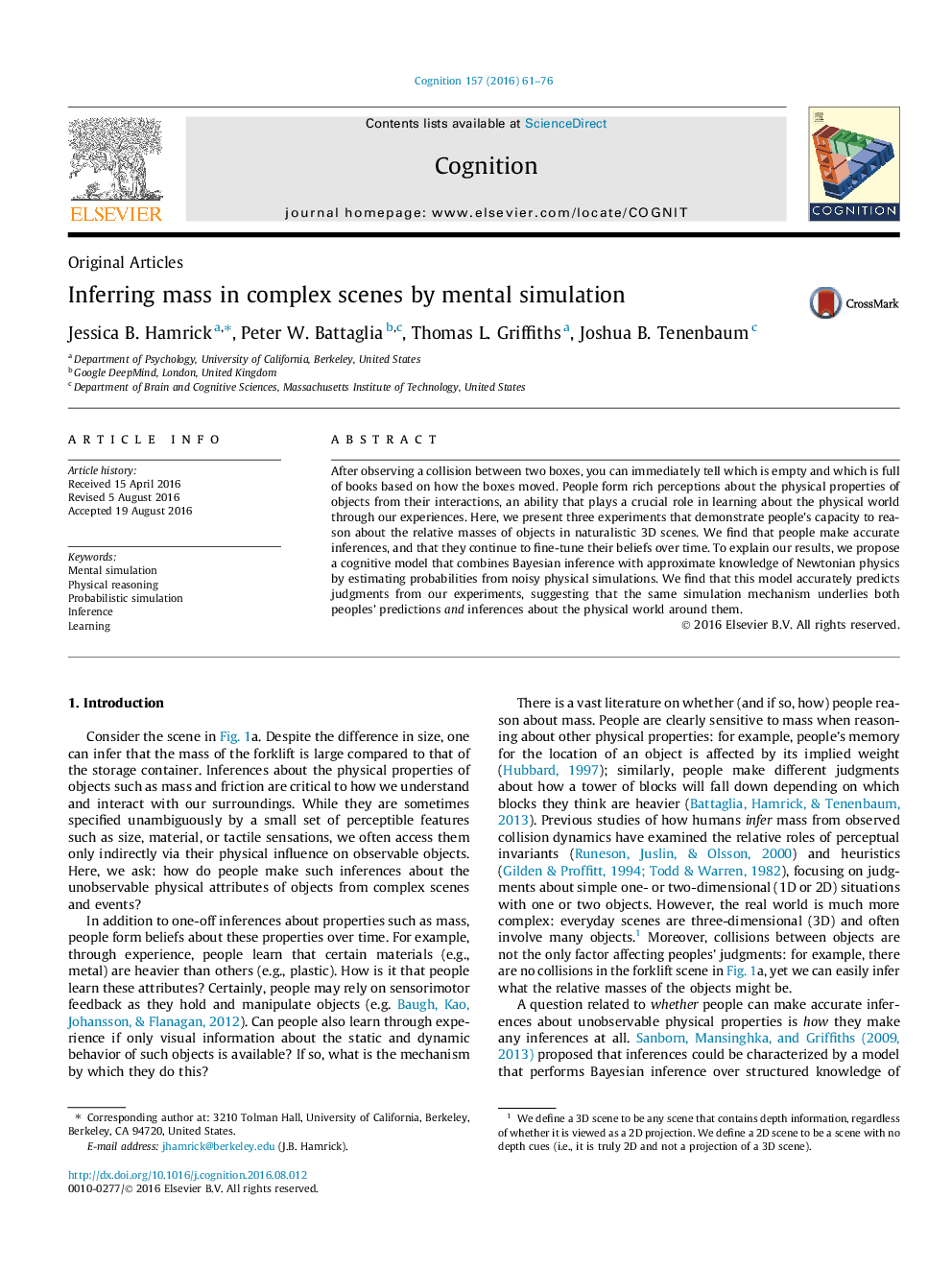| Article ID | Journal | Published Year | Pages | File Type |
|---|---|---|---|---|
| 7285737 | Cognition | 2016 | 16 Pages |
Abstract
After observing a collision between two boxes, you can immediately tell which is empty and which is full of books based on how the boxes moved. People form rich perceptions about the physical properties of objects from their interactions, an ability that plays a crucial role in learning about the physical world through our experiences. Here, we present three experiments that demonstrate people's capacity to reason about the relative masses of objects in naturalistic 3D scenes. We find that people make accurate inferences, and that they continue to fine-tune their beliefs over time. To explain our results, we propose a cognitive model that combines Bayesian inference with approximate knowledge of Newtonian physics by estimating probabilities from noisy physical simulations. We find that this model accurately predicts judgments from our experiments, suggesting that the same simulation mechanism underlies both peoples' predictions and inferences about the physical world around them.
Related Topics
Life Sciences
Neuroscience
Cognitive Neuroscience
Authors
Jessica B. Hamrick, Peter W. Battaglia, Thomas L. Griffiths, Joshua B. Tenenbaum,
